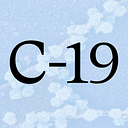Why the Vaccine Rollout in These 3 States Is Working Well
In Alaska, West Virginia, and Connecticut, tailoring the strategy to the state’s needs is key
In the nationwide Covid-19 vaccine rollout, some states are doing better than others. Alaska, New Mexico, and West Virginia have the highest percentage of fully vaccinated people in their populations among states, according to Bloomberg’s vaccine tracker. In Alaska, 15.6% of people have received two doses. Utah, for comparison, is at the bottom of the list with 6.5% of its population fully vaccinated as of this writing.
Population size, state size, infrastructure, and political leadership are among the many state-specific factors that can shape a state’s rollout. But the design of a vaccination campaign can go a long way. In a panel hosted by Brown University’s Watson Institute of International and Public Affairs at the end of February, experts leading successful vaccine campaigns in Alaska, West Virginia, and Connecticut (another notable early success) shared their experiences. Below are three lessons from these states that could be applied to others as the vaccine rollout expands beyond health care workers and nursing homes.
Leverage existing relationships to vaccinate whole communities
The Southcentral Foundation, an Alaska Native health care organization based in Anchorage, began its rollout according to the tiered system that most other states are using. But it later expanded to entire communities and organizations in existing relationships with the foundation. This community-based rollout has resulted in higher numbers of vaccinated people — young and old — than rollouts based solely on eligibility. It also created opportunities for community leaders to have conversations with health care experts about vaccine-related concerns, a key step in addressing vaccine hesitancy.
“We had massive efforts on our primary care forefront to be able to actively reach out to the folks that were on their panels that had already established relationships to say, ‘Hey, we’ve got this vaccine, it’s now on campus, let me tell you a little bit about it, what questions can I answer?’” explained panelist LaZell Hammons, Southcentral Foundation’s nurse director of quality improvement. It was key “to really encourage that conversation and dialogue to help get information to people so they can make an informed choice for themselves and their families.”
Health care providers in Sitka, Alaska, have also adopted this community-based approach. As NPR reported, Elliot Bruhl, MD, chief medical officer at the Southeast Alaska Regional Health Consortium, which serves Sitka, said that “the public health goal is vaccinating whole communities, Alaska Native people, and non-Native residents alike.” In Sitka, this approach has been so successful that some high schoolers are already getting vaccinated.
Tailor the rollout to serve the state’s most vulnerable
West Virginia University’s chief health officer, Clay Marsh, MD, pointed to the thoughtful consideration of state epidemiology data as a key driver of the state’s much-lauded rollout. “We started to look at our own epidemiology data and national data to come up with our prioritization scheme,” Marsh said during the panel.
Like most other states, West Virginia prioritized health care workers and people in nursing homes for vaccination. But as the rollout expanded, the focus was specifically on essential workers over the age of 50 because the state’s epidemiology data suggested that 97% of Covid-19 deaths occurred in that age group.
Another consideration was how the unique distribution of the state’s residents might affect vaccine access. West Virginia’s population is distributed widely over a large area, with many living in rural regions. As such, Marsh explained, quite a few residents do not have easy access to big-chain pharmacies like CVS and Walgreens, which have partnered with the federal government to distribute vaccines across the country. What these people did have access to — and had existing relationships with — were local mom-and-pop pharmacies spread throughout rural areas of the state.
“As we started along this route of having privately owned pharmacies and family-owned pharmacies [begin vaccination],” said Marsh, “we also took advantage of the relationships that were preexisting. So we got an uptake of about 85% of our nursing home residents and about 65% of our staff as part of our first wave.”
Stay flexible
Connecticut was an early standout in the initial vaccine rollout. As Alexandra Sifferlin wrote in the Coronavirus Blog in January, the state’s relatively flexible guidelines for vaccine eligibility allowed it to get more shots into arms. Speaking at the panel, Josh Geballe, commissioner of the Connecticut Department of Administrative Services, reiterated the importance of flexibility for its continued success.
The state’s goal throughout its vaccination campaign, he said, was to strike a balance between a rollout that was overly prescriptive and one that was the “Wild West” (he pointed to Florida’s “infamous” rollout, in which Eventbrite was used to schedule appointments and senior citizens slept on the sidewalk to hold their place in line). The goal, Geballe said, was to have “clear prioritization about who goes in what order that’s informed by public health, but we still put a lot of trust in flexibility into the process and into our vaccinating providers and partners so that they have the ability to go fast and to move quickly.”
Connecticut, where the population is less widely distributed than in West Virginia, has used big-chain pharmacies like CVS and Walgreens to deliver vaccines via the Federal Retail Pharmacy Program. Geballe noted, however, that the state took a hands-on approach in working with these pharmacies within Connecticut rather than leaving the rollout up to them.
The state began with regular meetings even before the rollout began to get facilities aligned. Despite some struggles with logistics and communication, the process worked because “we know who all of them are, and we talk to them all the time,” said Geballe.” The result, he noted, is a striking success story: By January 8, Connecticut had become one of the first states to complete its first round of vaccinations in its nursing homes.

